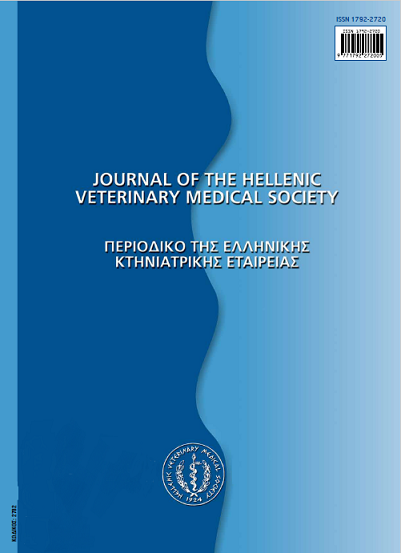Η Υψηλή Υδροστατική Πίεση στην Επεξεργασία Τροφίμων

Περίληψη
Η θερμική επεξεργασία (μαγείρεμα, παστερίωση,αποστείρωση κτλ.) ήταν για αιώνες η κυρία μέθοδος συντήρησηςτροφίμων. Πρόσφατα, οι τελευταίες τάσεις στην Επεξεργασία
Τροφίμων αποσκοπούν στην παραγωγή υγιεινών τροφίμων πουδιατηρούν σε μεγάλο βαθμό τα φυσικά οργανοληπτικά χαρακτηριστικά.Νέες Μέθοδοι Συντήρησης και συνδυασμοί τους, όπωςπρεσβεύει η Τεχνολογία Εμποδίων (Hurdle Technology), έχουνεξελιχθεί και χρησιμοποιούνται στη Βιομηχανία Τροφίμων. Μιααπό τις πιο υποσχόμενες και δοκιμασμένες στη διεθνή αγορά τεχνικέςείναι η επεξεργασία με Υψηλή Υδροστατική Πίεση. Η παστερίωσημε Υψηλή Υδροστατική Πίεση (200-600 MPa) εφαρμόζεταικυρίως σε τρόφιμα, όταν η χρήση της θερμικής επεξεργασίαςδεν είναι δυνατή ή όταν απαιτείται μέγιστη διατήρηση τηςθρεπτικής αξίας του τροφίμου. Σε αντίθεση με τη θερμική επεξεργασία,η Υψηλή Υδροστατική Πίεση δύναται να αδρανοποιήσειμικροοργανισμούς και ανεπιθύμητα ένζυμα σε χαμηλές θερμοκρασίες,χωρίς να επηρεάζει τη γεύση, το χρώμα ή τα θρεπτικά συστατικάτου τροφίμου. Επίσης, η Υψηλή Υδροστατική Πίεση καταστρέφειτα παράσιτα, τους ιούς και τα πρίον. Είναι μια εξαιρετικήμέθοδος παστερίωσης, που ίσως στο μέλλον χρησιμοποιηθείκαι για την αποστείρωση των τροφίμων. Η Υψηλή ΥδροστατικήΠίεση επηρεάζει σχεδόν όλες τις δραστηριότητες και τα στοιχείατου κυττάρου, με πιο εμφανή επίδραση στη μεγαλομοριακή σύνθεση,τις πρωτείνες του και την κυτταρική μεμβράνη του. Ένα απότα κύρια προβλήματα της μεθόδου είναι η εμφάνιση πιεζοάντοχωνστελεχών μικροοργανισμών, με εξαιρετικά μεγάλες αποκλίσεις ωςπρος την αντοχή τους στις υψηλές πιέσεις, που δυσκολεύουν τοσχεδιασμό της επεξεργασίας. Το φαινόμενο αυτό σχετίζεται κυρίωςμε την παραγωγή πρωτεϊνών κατά του στρες. Το προαναφερόμενοπρόβλημα μπορεί να λυθεί με το συνδυασμό της Υψηλής ΥδροστατικήςΠίεσης με άλλες μεθόδους εξυγίανσης ή με την αύξησητης εξασκούμενης πίεσης. Η Υψηλή Υδροστατική Πίεση είναι μιαμέθοδος η οποία εξελίσσεται γρήγορα και παίρνει τη θέση της στησύγχρονη Βιομηχανία Τροφίμων, καθώς τα πρώτα τρόφιμα πουεπεξεργάστηκαν με Υψηλή Υδροστατική Πίεση παρουσιάστηκανστην αγορά μόλις την τελευταία δεκαετία. Η Ελληνική ΒιομηχανίαΤροφίμων, σε συνεργασία με τα Ερευνητικά Ιδρύματα, πρέπει ναεπωφεληθούν από τις εξελίξεις στον τομέα αυτό, καθώς η μέθοδοςαυτή μπορεί να βελτιώσει σημαντικά την ποιότητα και τηνανταγωνιστικότητα των ελληνικών προϊόντων.
Λεπτομέρειες άρθρου
- Πώς να δημιουργήσετε Αναφορές
-
KARATZAS (Κ.Α.Γ. ΚΑΡΑΤΖΑΣ) K. Α. (2017). Η Υψηλή Υδροστατική Πίεση στην Επεξεργασία Τροφίμων. Περιοδικό της Ελληνικής Κτηνιατρικής Εταιρείας, 55(4), 324–330. https://doi.org/10.12681/jhvms.15131
- Τεύχος
- Τόμ. 55 Αρ. 4 (2004)
- Ενότητα
- Review Articles
Οι συγγραφείς των άρθρων που δημοσιεύονται στο περιοδικό διατηρούν τα δικαιώματα πνευματικής ιδιοκτησίας επί των άρθρων τους, δίνοντας στο περιοδικό το δικαίωμα της πρώτης δημοσίευσης.
Άρθρα που δημοσιεύονται στο περιοδικό διατίθενται με άδεια Creative Commons 4.0 Non Commercial και σύμφωνα με την άδεια μπορούν να χρησιμοποιούνται ελεύθερα, με αναφορά στο/στη συγγραφέα και στην πρώτη δημοσίευση για μη κερδοσκοπικούς σκοπούς.
Οι συγγραφείς μπορούν να καταθέσουν το άρθρο σε ιδρυματικό ή άλλο αποθετήριο ή/και να το δημοσιεύσουν σε άλλη έκδοση, με υποχρεωτική την αναφορά πρώτης δημοσίευσης στο J Hellenic Vet Med Soc
Οι συγγραφείς ενθαρρύνονται να καταθέσουν σε αποθετήριο ή να δημοσιεύσουν την εργασία τους στο διαδίκτυο πριν ή κατά τη διαδικασία υποβολής και αξιολόγησής της.


